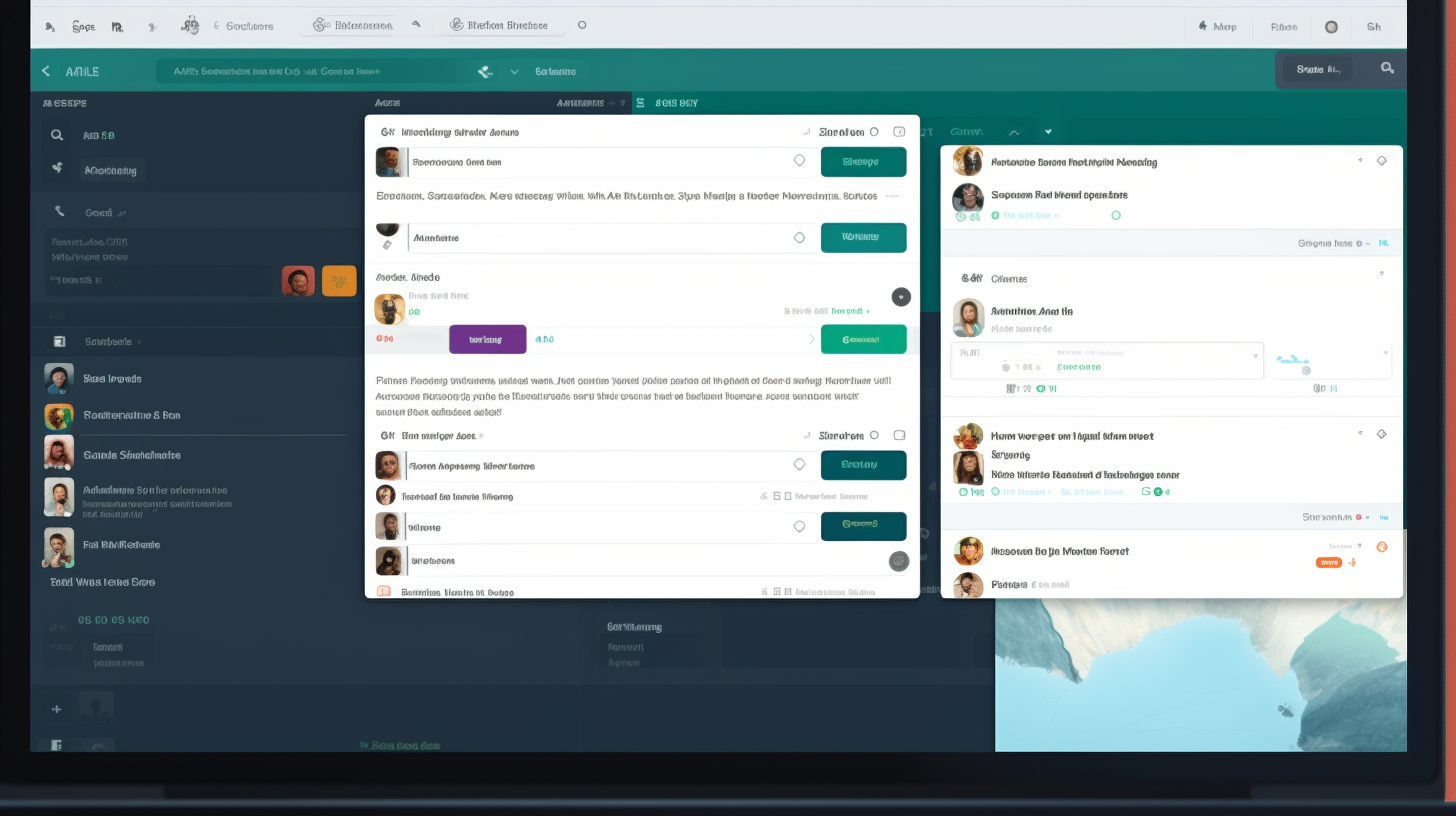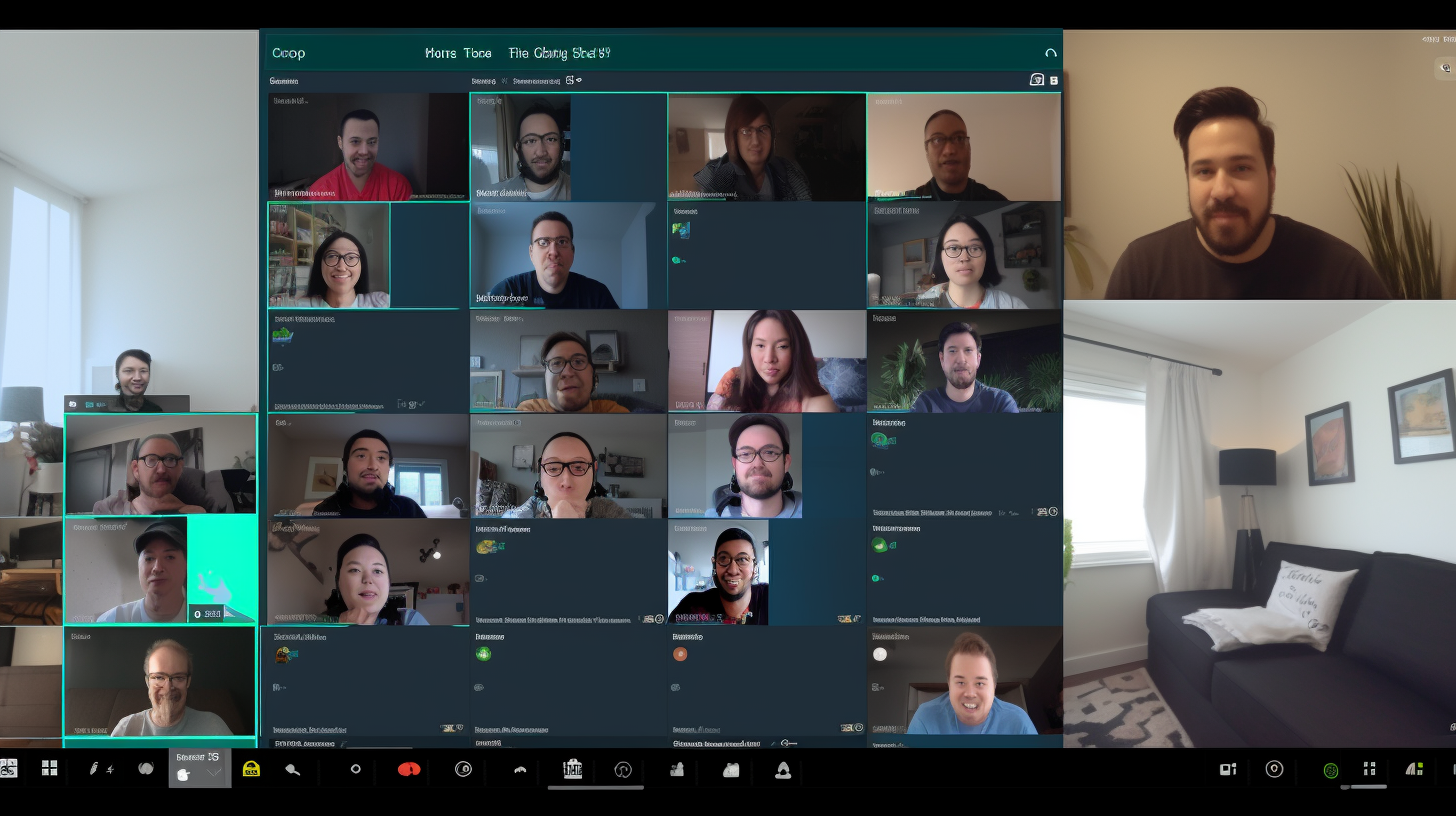Are You Leading a Team of Ghosts? How to Fix the 5 Biggest Virtual Collaboration Fails
Ever feel like you’re leading a team of ghosts? You see their names on screen, but the energy, the connection, the spark… it’s just not there. This isn’t just a feeling; it’s a symptom of a broken virtual workflow. With a huge chunk of companies embracing remote work—Forbes Advisor notes that 98% of workers want some form of it—the ability to lead from a distance isn’t just a “nice-to-have” skill anymore. It’s the skill. Yet so many leaders are tripping over the same virtual banana peels, turning productive teams into disconnected nodes on a network map. It’s time we stopped managing logins and started leading people. Let’s get real about the five mistakes you might be making and, more importantly, how to actually fix them.

Mistake 1: Treating Time Zones Like a Minor Inconvenience
Ignoring time zones is like trying to build a house on a foundation that shifts every hour. It’s fundamentally unstable. Asking your colleague in Mumbai to join a 9 AM EST call is asking them to sacrifice their evening. Do it once, it’s an annoyance. Do it repeatedly, and you’re broadcasting that their time doesn’t matter. You’re eroding trust and creating a “headquarters vs. everyone else” culture.
Yes, tools like Calendly are great for finding mutual meeting times. The Pro: It eliminates the endless “what time works for you?” email chain. The Con: Over-reliance on it can feel impersonal. My advice? Use it for scheduling, but don’t let it replace the human touch of a quick “Hey, I know it’s late for you, is this time genuinely okay?” message. It shows you see a person, not just a time slot.
A common myth is that accommodating everyone is impossible. It’s not about finding a perfect time; it’s about equitable inconvenience. Rotate meeting times so the same people aren’t always bearing the brunt of the “time zone tax.” It’s a small change that pays huge dividends in engagement.

Mistake 2: Leaving a Trail of Digital Exhaust
Every vague email, every ambiguous Slack message, every meeting without a clear agenda—I call this “digital exhaust.” It’s the useless byproduct of poor communication that pollutes your team’s focus and clarity. A message like “Let’s touch base on the project” is meaningless. It creates anxiety. What part? What’s the goal? Who needs to be there?
My initial thought was that leaders just needed to be more specific. But thinking about it more, the real key is moving from broadcasting to true communication. It’s about creating clear, predictable channels. For instance, we use Slack for quick queries, email for formal summaries, and dedicated project management tools for task updates. This isn’t just about clarity; it’s about reducing the cognitive load on your team. For more on this, our guide on Effective Workplace Communication is a great starting point.
Slack is a collaboration powerhouse. The Pro: It centralizes communication and can foster a great team culture with dedicated channels. The Con: It can quickly become a 24/7 distraction machine, blurring the lines between work and life. The fix: Set clear “channel etiquette” and encourage the use of status updates and notifications so people can actually disconnect.

Mistake 3: Running Virtual Meetings That Are Just Monologues
If your virtual meetings could be an email, they absolutely should be. So many leaders just hit “record” and talk *at* their teams for an hour. That’s not collaboration; it’s a webinar. Disengagement in these settings is a survival mechanism against boredom!
The counter-intuitive truth? The most productive virtual meetings often feel a bit like a well-hosted game show. They are structured for interaction. Using a digital whiteboard tool like Miro isn’t just about adding a fancy gadget; it’s about creating a shared space where everyone can contribute simultaneously. It democratizes the conversation.
The Pro: Miro is an infinite canvas for brainstorming, diagramming, and keeping visual records of discussions. It’s fantastic for making abstract ideas concrete. The Con: For someone new, it can be overwhelming—the “blank canvas” problem. My advice is to always start with a template. Don’t make your team learn a new tool *and* solve a complex problem at the same time.

Mistake 4: Pretending Tech Glitches Don’t Happen
Ah, the dreaded frozen screen during a critical presentation. We’ve all been there. A leader’s worst mistake here is to get flustered or, even worse, blame the person with the tech issue. Technology is the room we’re all meeting in. And sometimes, the plumbing breaks.
A simple backup plan is a must. Recording sessions on Zoom is standard practice. But the real pro-move is having a low-tech backup channel. A simple group chat on a separate platform (like WhatsApp or Signal) for when the main platform goes down can be a lifesaver. It keeps the communication line open while you troubleshoot. This kind of planning shows foresight and builds confidence—it’s a core tenet of solid Digital Fluency.

Mistake 5: Assuming Trust Builds Itself
This is the big one. Trust is the currency of a successful remote team. In an office, trust is built over coffee, in hallway conversations, and by seeing someone work. Online, those opportunities vanish. You have to build it intentionally.
Many leaders think trust is built in big team-building events. That’s a myth. Trust is actually built in the small, consistent, everyday interactions. A Gallup study underscores that the quality of one-on-one conversations is a primary driver of trust. Scheduling regular, non-agenda check-ins isn’t “wasting time”; it’s an investment. Ask about their weekend. Talk about a show you both watch. It’s these small moments of connection that weave the fabric of a resilient team, something we explore deeply in our work on Leadership Resilience.
It’s incredible when you think about it—the most powerful tool for virtual collaboration isn’t a piece of software, but a simple, genuine conversation.
Author’s Final Reflection
For years, I’ve watched organizations graft old office habits onto new virtual worlds and then wonder why they’re not working. The shift to remote isn’t just a change of scenery; it’s a paradigm shift in how we connect and create value. Leading a virtual team requires being more intentional, more empathetic, and—frankly—more human than ever before. Stop managing the screen and start leading the person behind it. That’s the real secret to closing the distance.





Leave a Reply